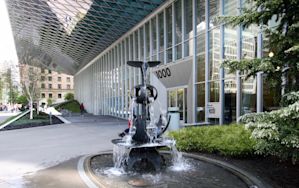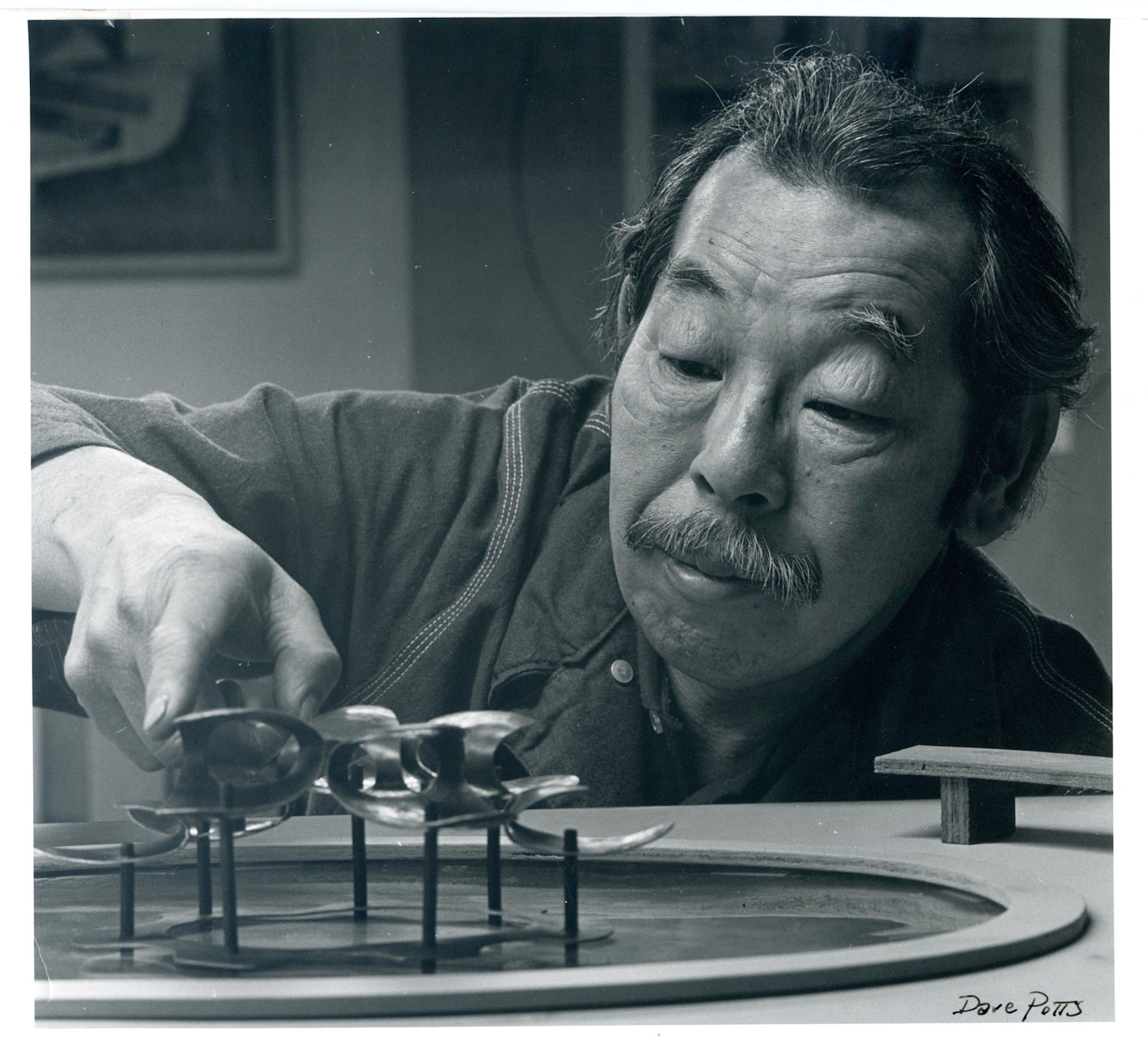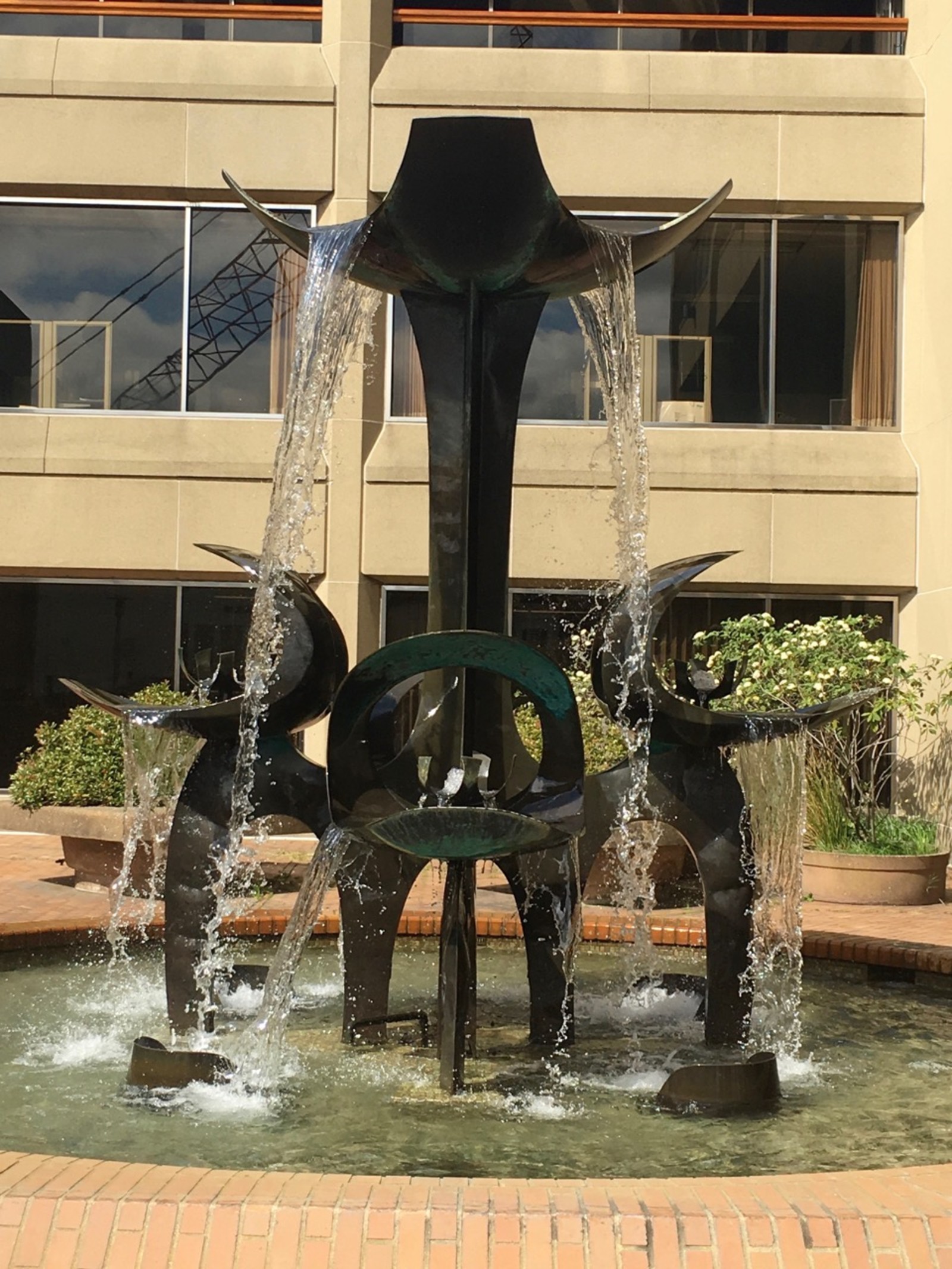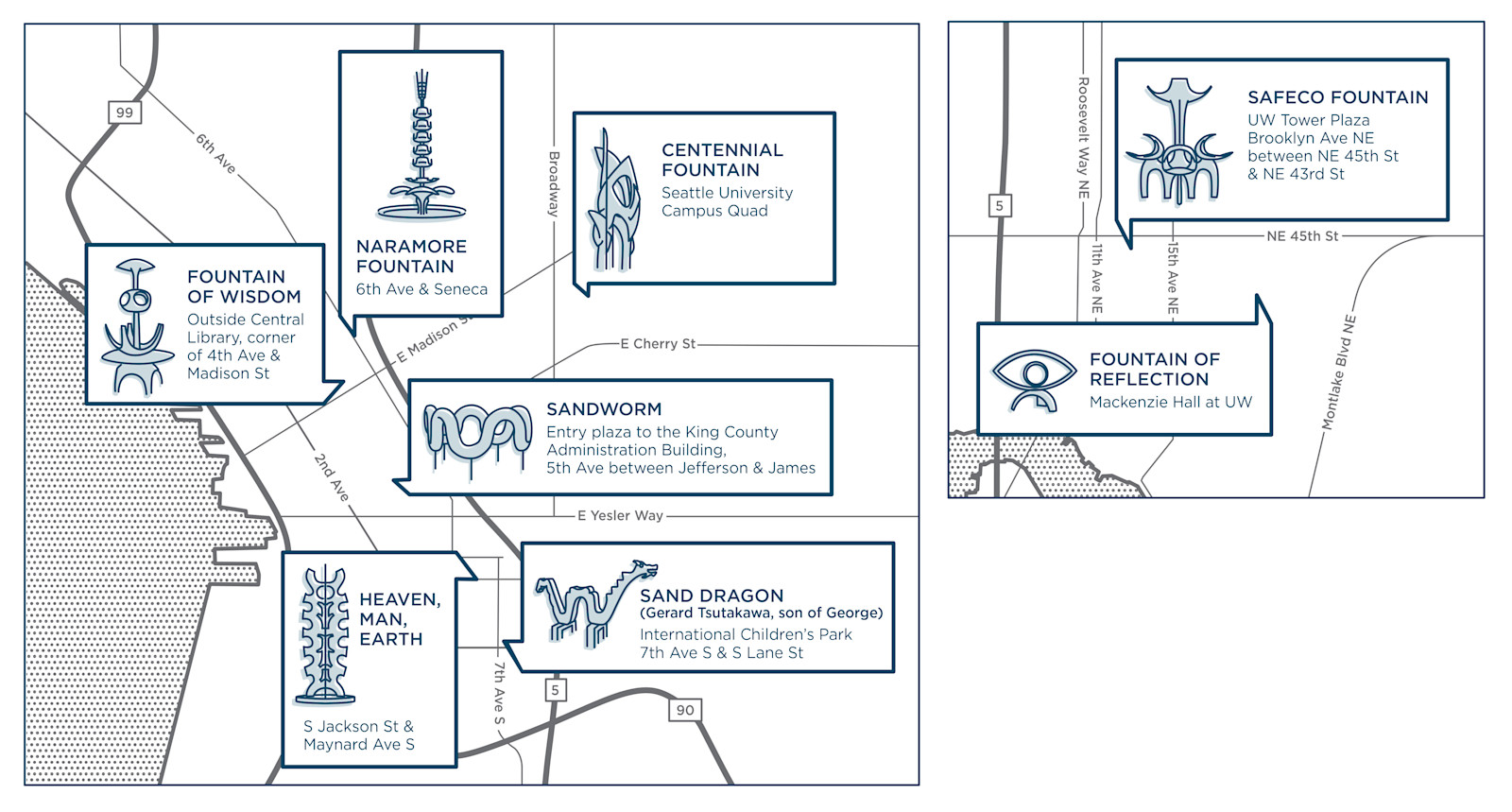The Fountains of George Tsutakawa

In the 70’s, my father embarked upon a dream trip where he would climb to base camp on Mt. Everest. His small group consisted of a guide, his best friend and a handful of Pacific Northwesterners, including a local artist, George Tsutakawa. The trip was a success, rich with beauty, comradery and physical exertion. Ever after, the Tsutakawa name was spoken with reverence at our house.

Photo Credit: Dave Potts
Born in Seattle in 1910, and named after George Washington, he was sent to live with his grandmother in Japan at age seven. Ten years later he returned to Seattle. While working in his family grocery, located in the International District, he attended Broadway high school and then the University of Washington where he studied art. In 1932, he won first prize in a contest sponsored by Scholastic magazine. Other winners were Morris Graves and Fay Chong, two other artists who would join Tsutakawa in what became known as Northwest School, an art movement that developed in the 1930’s and 40’s. Asian art and philosophy, Abstract Expressionism, and the beauty of the region inspired the movement.
During the war years, Tsutakawa’s family was rounded up and sent to detention camps. Tsutakawa himself, a native born citizen, was drafted into the army to protect a country that had just confiscated his family's grocery store and imprisoned much of his family. After the war, the family grocery was gone with no available compensation. With no job, but no obligations, Tsutakawa found himself free to return to graduate school in art at the University of Washington on the GI Bill. Soon he had a growing reputation as an artist. One of his early commissions was a set of walnut door panels for Canlis Restaurant. Renowned Northwest artists Mark Tobey and Paul Horiuchi were close friends. Tsutakawa would go on to teach at the University of Washington for over 30 years influencing and guiding generations of artists. But what Tsutakawa is probably best known for are his fountains, which range the globe, with the highest concentration, not surprisingly, in the Pacific Northwest.

In Tsutakawa’s obituary (1998) in the Seattle Times, Robin Updike wrote, “Without exception, the fountains are dazzling rhapsodies of abstract bronze form and cascading water, compositions that seem to sing timeless songs of hope, harmony and beauty. Coming around a corner in downtown Seattle to find one of Mr. Tsutakawa’s fountains is like rounding a path in the mountains and finding a waterfall. Your heart catches a little at the beauty of the scene. You’re grateful, in a spiritual way, to be there.”
Fountain of Wisdom, his first, was created for the Seattle Public Library in 1958. Of the more than sixty he made it remained one of his favorites. A stack of abstract forms on a single vertical axis, the modernist sculpture looks as though it may have been shaped by water itself. Originally the fountain stood prominently in a plaza at the 5th Avenue entrance. When the new library designed by Rem Koolhaas was built on the site of the old library, the fountain was moved to the corner of 4th and Madison where the polygonal building looms over it. Nonetheless, it is worth a visit.
Tsutakawa saw the cycle and movement of water as central to life and tried to express this in his fountains. In an interview with Martha Kingsbury in 1983, Tsutakawa said, “This great cycle and movement of water, which has been going on ever since the earth was formed…to me it’s the most permanent phenomena that we live in, and we can’t do without…that’s what I like to express in my fountains. Now the sculpture itself, they don’ really look like flowers or trees, anything. It’s the spirit and the movement, the cycle that I try to express.”

One could make a fine day by going on a treasure hunt, locating Tsutakawa’s public fountains and sculptures. To read our summer newsletter all about Public Art, click here. Here are the locations of some of his most prominent public art in Seattle:
Fountain of Wisdom,1960, Fourth Avenue and Madison, Downtown Library.
Fountain of Reflection,1962, McMahon Hall, University of Washington.
The Joshua Green Fountain, 1966, Colman Dock, Pier 52. (Due to seawall construction, this one may be barricaded off at times.)
Naramore Fountain, 1967, Sixth Avenue and Seneca Street.
Safeco Fountain, 1973, University of Washington Plaza (formerly Safeco Plaza) at Northeast 45th Street and Brooklyn Avenue NE.
Centennial Fountain, 1989, Seattle University, Broadway and Madison Street.
Sculptures
Sandworm, 1986, entry plaza, King County Administration Building, Fifth Avenue between James and Jefferson streets.
Heaven, Man & Earth, 1979, Maynard Avenue South and South Jackson Street.
Sand Dragon, 1981, Gerard Tsutakawa (son of George) International Children's Park, Seventh Avenue South and South Lane Street.
CORRECTION: In our newsletter, we erroneously attributed Sand Dragon to George. It was actually created by George's son, Gerard Tstuakawa. Gerard is an accomplished sculptor in his own right - he created the iconic mitt in front of Safeco Field. We apologize to the Tsutakawa family.

